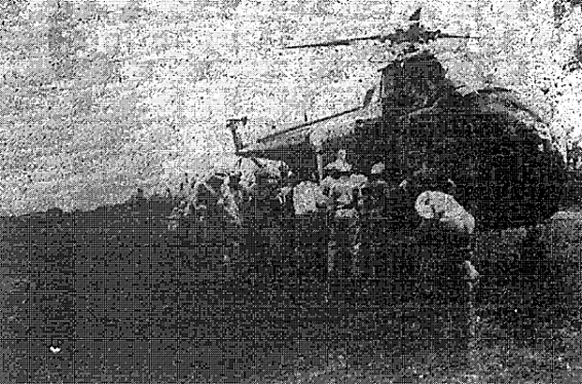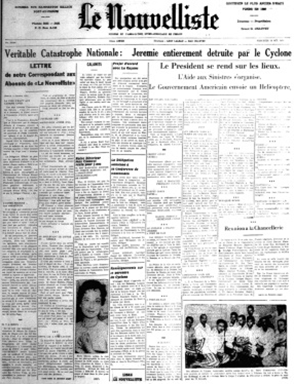"Hurricane Hazel" by the Island Luminous Editorial Board
Magloire’s "Golden Age" came to an abrupt end in October 1954. That month Hurricane Hazel built momentum over the waters north of Venezuela and then swung up toward Hispaniola’s eastern coast. Taken by surprise, over one thousand Haitians were killed by the time the storm moved on to the Bahamas. In the storm’s wake, diseases like malaria spread and added to the initial death toll.
At the time, the Haitian government obtained a large portion of its income by taxing agricultural exports. Hazel, however, demolished Haiti’s coffee plants, as well as its banana and cacao trees. That year Haiti lost nearly half of its coffee harvest and, with it, the tax revenue needed to invest in the recovery.
Led by the Red Cross and the United States, the international community immediately responded with assistance. The United States Marines sent helicopters to evacuate the injured. Some regions, like Jérémie on the southwest peninsular, were hit especially hard and needed help urgently.
Given its location, its limited infrastructure, and its dependence on customs duties, Haiti was extra vulnerable to hurricanes. This is still the case today. Flora in 1963 was the next major storm to hit Haiti. It killed nearly five thousand people and caused well over $150 million in damage.

